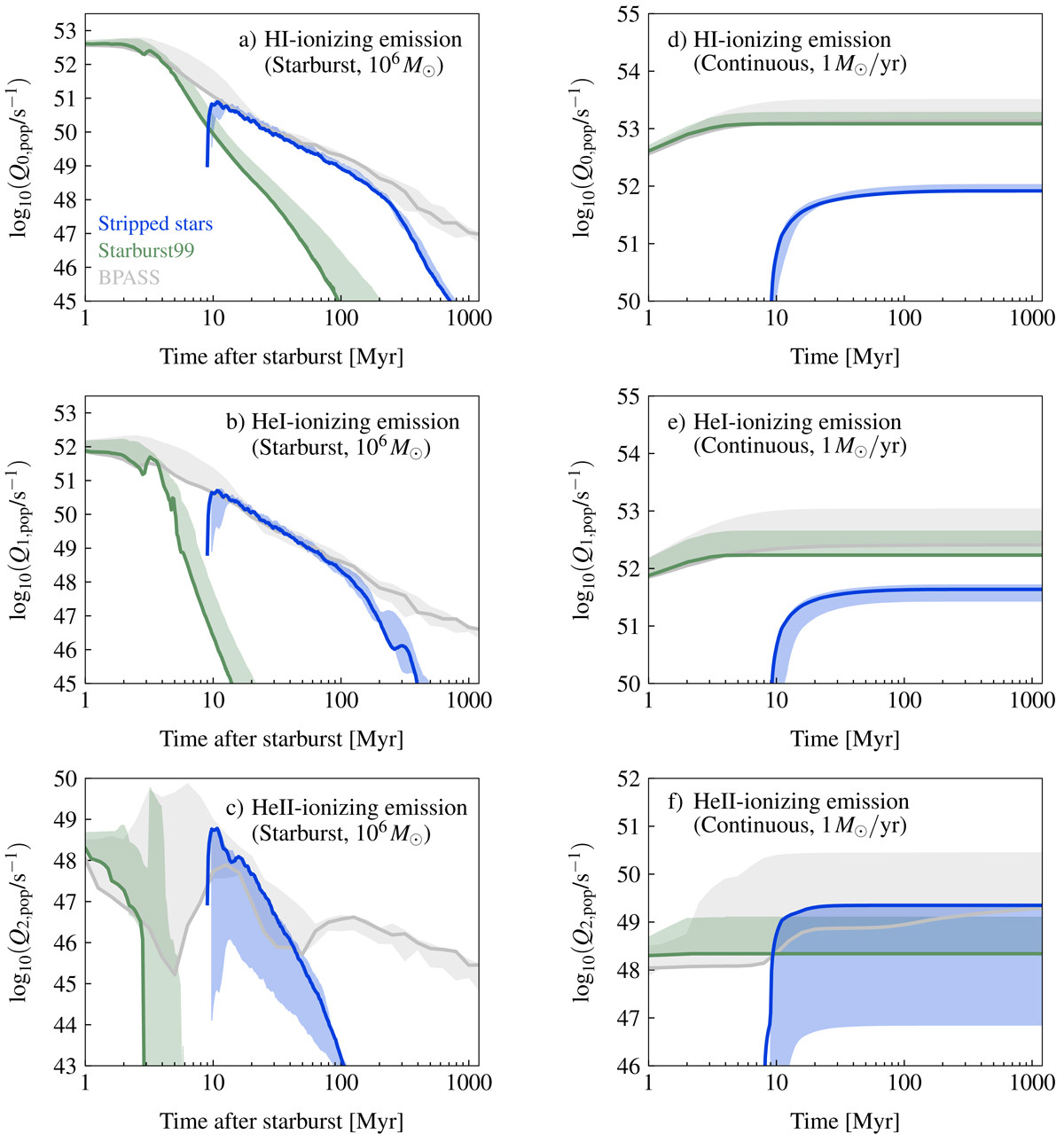Fig. 4.

Emission rates of ionizing photons from stellar populations as a function of time. The contribution from stripped stars is shown in blue, while green represents the contribution from the massive main sequence and WR stars in the stellar population (models from STARBURST99, see Sect. 2.3). For reference, we show the predictions from BPASS models in which binary interactions are included using gray color. The solid lines correspond to the predictions from a population with solar metallicity, while the shaded regions of the same color represent the effect of lowering the metallicity, from solar down to Z = 0.0002 for the stripped stars (see Appendix A and Table A.1). Left column: emission rates from a co-eval stellar population with initially 106 M⊙ in stars, and right column: emission rates from a stellar population in which stars form at the constant rate of 1 M⊙ yr−1. Top, middle, and bottom rows: emission rates of H I-, He I-, and He II-ionizing photons, respectively (Q0, pop, Q1, pop, and Q2, pop).
Current usage metrics show cumulative count of Article Views (full-text article views including HTML views, PDF and ePub downloads, according to the available data) and Abstracts Views on Vision4Press platform.
Data correspond to usage on the plateform after 2015. The current usage metrics is available 48-96 hours after online publication and is updated daily on week days.
Initial download of the metrics may take a while.


